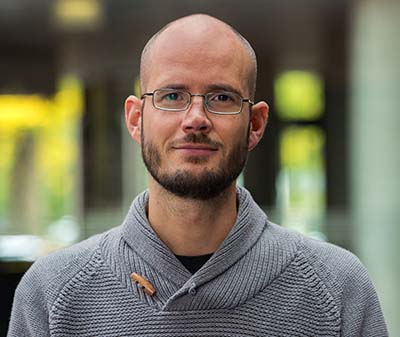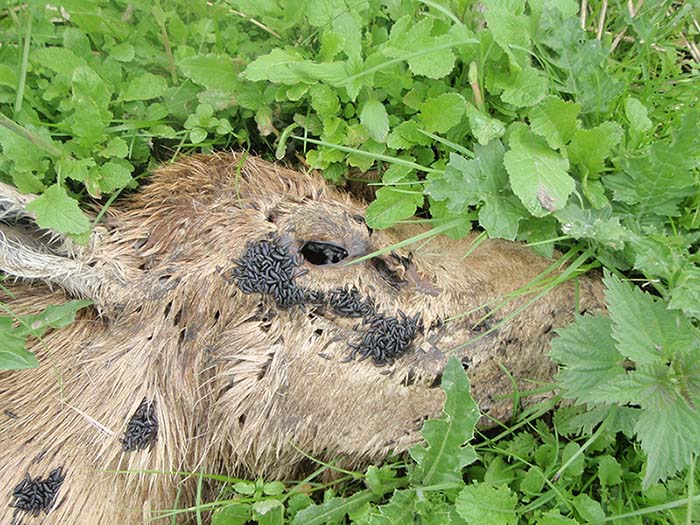Carcasses important for plants and insects in the Oostvaardersplassen
Allowing the carcasses of dead deer to remain in the Oostvaardersplassen nature reserve has a positive effect on biodiversity in the area. Not only do the carcasses attract many more insects and other arthropods in the short term – but also in the long term, due to increased plant growth. Plants located near animal carcasses became five times bigger than usual, leading to a surge in the number of plant-eating invertebrates on the plants and, therefore, also in the number of their predators. This is the conclusion of a recently published study conducted by UG researcher Dr Roel van Klink, which was conducted before the number of large grazers was drastically reduced in connection with updated nature management policy.

‘The fact that carcasses are important for scavengers was, of course, no surprise to me. But it was a surprise that, after five months, there was such an enormous effect due to plant growth. The insects that live on these plants profit greatly from the carcasses’, says Roel van Klink. These results provide another insight into the role of dead animals in ecosystems. ‘People are becoming more accustomed to dead wood in Dutch forests, which leads to higher biodiversity. Dead animals in nature reserves, however, are still often taboo due to the commotion surrounding the Oostvaardersplassen in 2018’, explains Prof. Chris Smit, assistant professor at the Groningen Institute for Evolutionary Life Sciences at the UG. And that is a fact that both researchers find a shame, considering the great value of carcasses for biodiversity and the functioning of ecosystems, even on very fertile ground such as that in the Oostvaardersplassen.
Due to current legislation, the possibilities for allowing dead large grazers to remain are still limited in most nature areas. The researchers call for a relaxation of these regulations, so that biodiversity in other nature reserves can also benefit.

More information
Reference PLOS ONE: Van Klink R, van Laar-Wiersma J, Vorst O, Smit C (2020) 'Rewilding with large herbivores: Positive direct and delayed effects of carrion on plant and arthropod communities;, PLoS ONE 15 (1): e0226946.
| Last modified: | 21 April 2020 3.05 p.m. |
More news
-
21 November 2024
Dutch Research Agenda funding for research to improve climate policy
Michele Cucuzzella and Ming Cao are partners in the research programme ‘Behavioural Insights for Climate Policy’
-
13 November 2024
Can we live on our planet without destroying it?
How much land, water, and other resources does our lifestyle require? And how can we adapt this lifestyle to stay within the limits of what the Earth can give?
-
13 November 2024
Emergentie-onderzoek in de kosmologie ontvangt NWA-ORC-subsidie
Emergentie in de kosmologie - Het doel van het onderzoek is oa te begrijpen hoe ruimte, tijd, zwaartekracht en het universum uit bijna niets lijken te ontstaan. Meer informatie hierover in het nieuwsbericht.
